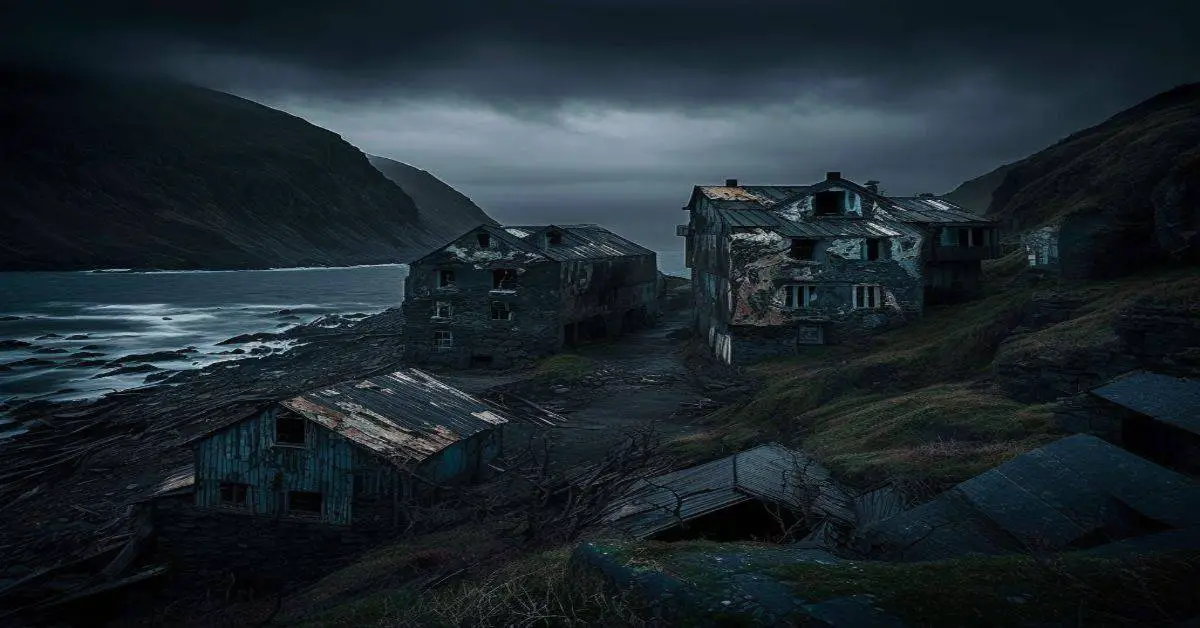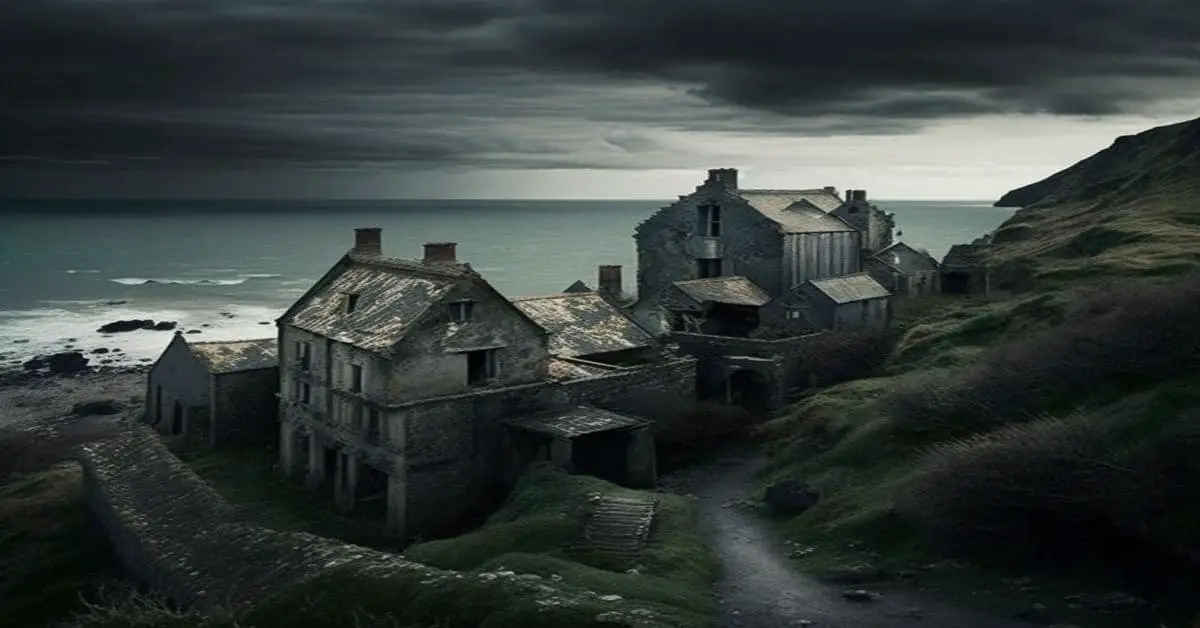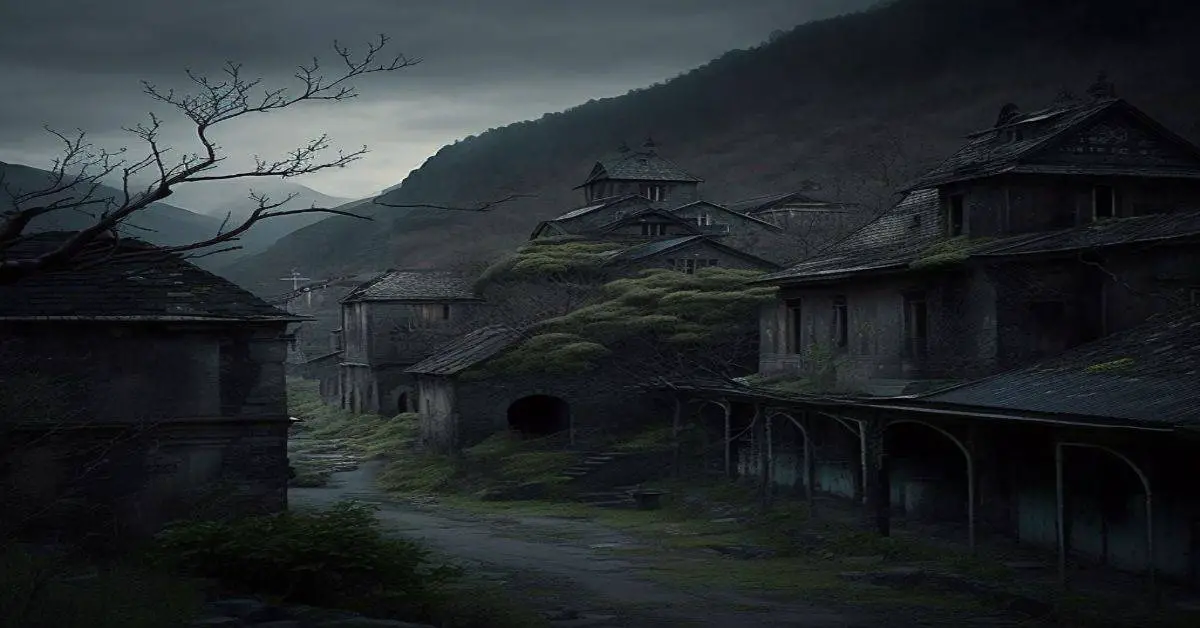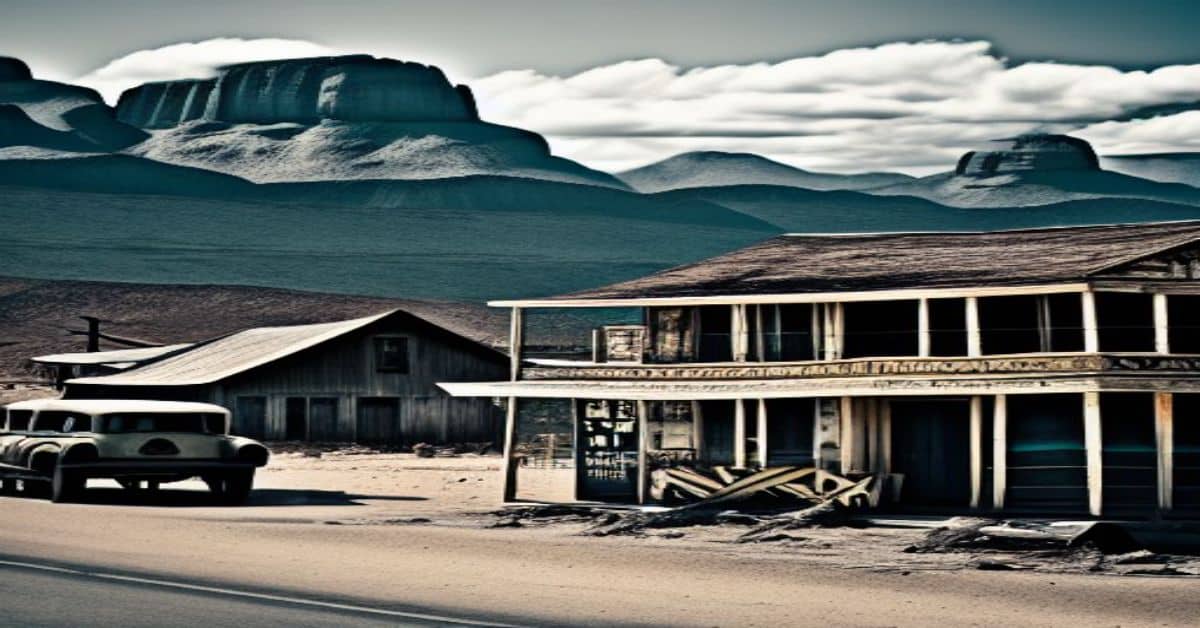Cantara, a once-thriving settlement in Roosevelt County, New Mexico, now lay abandoned and forgotten. Despite its current state, the ghost town still holds a unique charm that attracts visitors looking to explore the remnants of the past.
Located just 30 miles west of Clovis, Cantara is now only a memory with no visible remains, making it an intriguing destination for those interested in history and the American West.
The history of Cantara dates back to the early 1900s when it was established as a railway stop for the Pecos Valley and Northern Texas Railroad. The town grew rapidly, attracting settlers and businesses, and by the 1920s, it was a bustling community with a post office, school, and numerous shops.
However, with the decline of the railroad industry and the devastating drought of the 1930s, the town’s population dwindled, and by the 1950s, Cantara was abandoned. Despite its downfall, Cantara’s rich history and unique charm have made it a popular destination for those looking to explore the remnants of the past.
Key Takeaways
- Cantara was a thriving community in the early 1900s. Still, its population dwindled due to the decline of the railroad industry and the drought of the 1930s, leading to its abandonment in the 1950s.
- Despite having no physical remains, Cantara still holds a unique charm that attracts visitors who want to explore the remnants of the past and capture stunning photographs of the area during the golden hour.
- Visitors should come prepared with their own food, water, and supplies as the area has no activities or facilities.
- Cantara serves as a reminder of the transitory nature of life and the importance of preserving our cultural heritage, as its cultural impact is tied to the memories of those who once lived there.
Location and History
Cantara, a ghost town located in Roosevelt County and situated 30 miles west of Clovis and just south of Krider, was established on May 1, 1908, with a post office, but had only a brief existence, as it closed on September 30, 1912, leaving behind only memories and no remains.
The town’s geographical significance lies in its location, once a hub of activity for the nearby ranches and farms. However, with the advent of the automobile and better transportation, Cantara’s population dwindled, becoming a ghost town.
Cantara’s cultural impact is tied to the memories of those who once lived there. Cantara was once a bustling town despite its brief existence, and its people left their mark on the landscape.
Today, the only thing that remains of Cantara is the memory of what once was. However, the town’s brief existence serves as a reminder of the transitory nature of life and the importance of preserving our cultural heritage.
Features and Remains
The notable feature found in the area of Cantara is beargrass, a plant with long, grass-like leaves and tall, slender stems. The plant is known for its striking appearance, which features a large, creamy-white flower cluster that shoots up from the center of the plant. Beargrass sightings in the area are not uncommon and add to the mystique of the ghost town.
As for the remains of the ghost town, they are described as ‘nada’ or nothing. While no physical structures are left standing, the area is still rich in history and haunting stories. Visitors can explore the town’s remnants, including old foundations and scattered debris, to get a sense of what life was like for the settlers who once called Cantara home.
Despite its lack of physical remains, Cantara remains an important part of New Mexico’s past and offers a unique glimpse into the state’s rich history.
Visiting and Activities
Located in Roosevelt County, Cantara is a must-visit destination for those who want to explore the remains of a once-bustling settlement. The ghost town offers visitors the chance to immerse themselves in the area’s rich history and haunting stories while enjoying the peaceful and scenic surroundings.
Exploring the ruins of Cantara is a unique experience that will take visitors back in time. The remains of the town are scattered throughout the area, and visitors can explore the abandoned buildings and structures left behind. Some notable features include the remains of the post office, old houses, and the foundations of other buildings.
In addition to exploring the ruins, visitors to Cantara can also capture stunning photographs of the area. The ghost town and surrounding landscape provide a picturesque backdrop for photography enthusiasts. The best time to visit Cantara for photography is during the golden hour when the sun sets and the light is soft and warm.
Visitors can also take advantage of the beautiful scenery and peaceful surroundings to enjoy a picnic, relax, and unwind. However, it is important to note that the area has no activities or facilities, so visitors should come prepared with their own food, water, and supplies.
Frequently Asked Questions
What caused the decline of Cantara and why did the residents leave?
The decline of Cantara was likely due to lack of economic opportunities and dwindling resources. Residents likely left in search of better prospects, such as jobs and fertile land, leading to the town’s abandonment.
Are there any legends or ghost stories associated with Cantara?
Local folklore and ghost stories surrounding Cantara are scarce, with no notable legends or hauntings reported. The town’s lack of settlement and remains may contribute to its lack of supernatural tales.
Has any archaeological work been done in Cantara to uncover its history?
Excavation potential exists in Cantara for uncovering its history, but preservation challenges such as deterioration of structures and lack of funding hinder progress. No significant archaeological work has been reported in the area.
Are there any nearby attractions or places to visit while in the area?
Numerous nearby attractions and outdoor activities can be found around Cantara. Visitors can explore the nearby Blackwater Draw Museum, hike in the scenic Caprock Canyons State Park, or enjoy a picnic in Oasis State Park.
What is the current state of the land and environment surrounding Cantara?
The land surrounding Cantara has undergone restoration efforts following the environmental impact caused by the town’s former activities. Remediation includes soil and groundwater treatment to address the presence of contaminants, allowing for ecological recovery.



